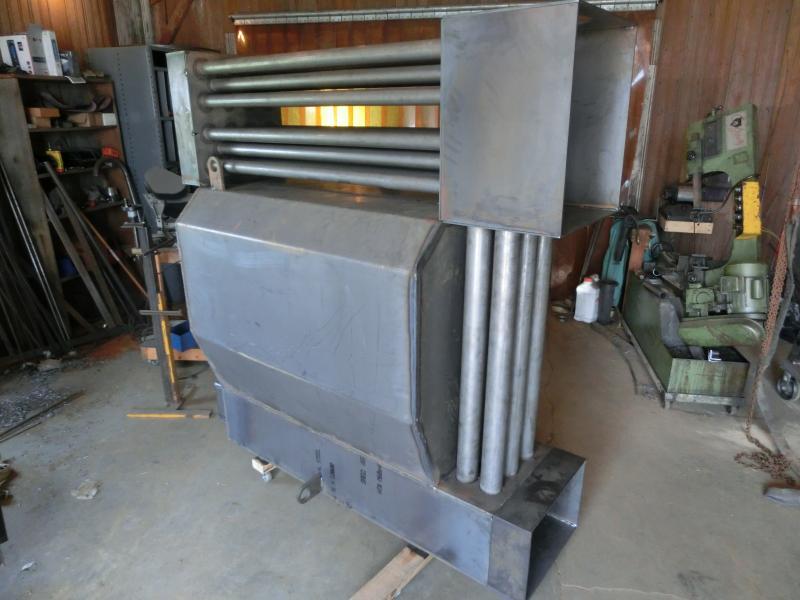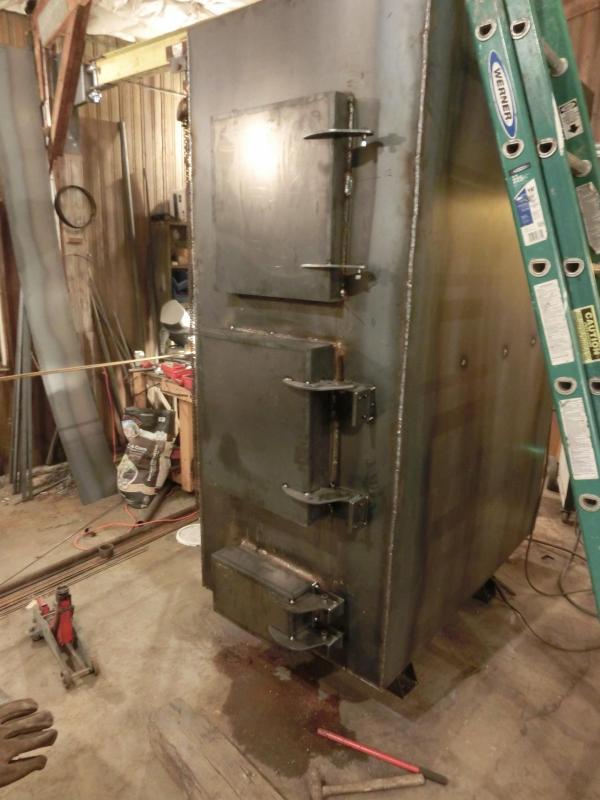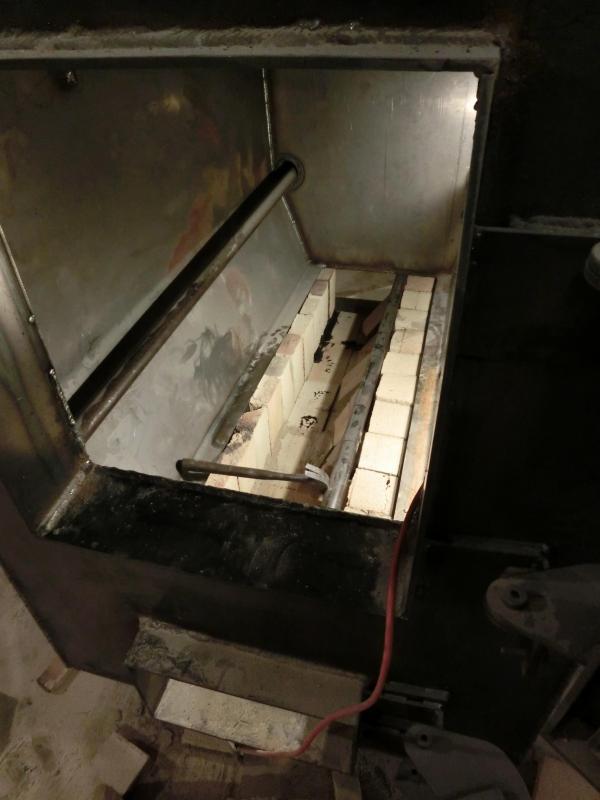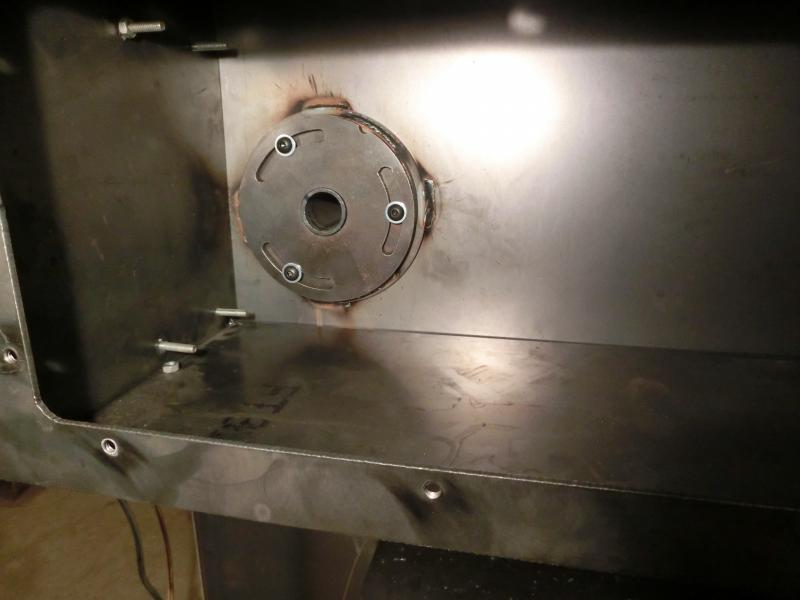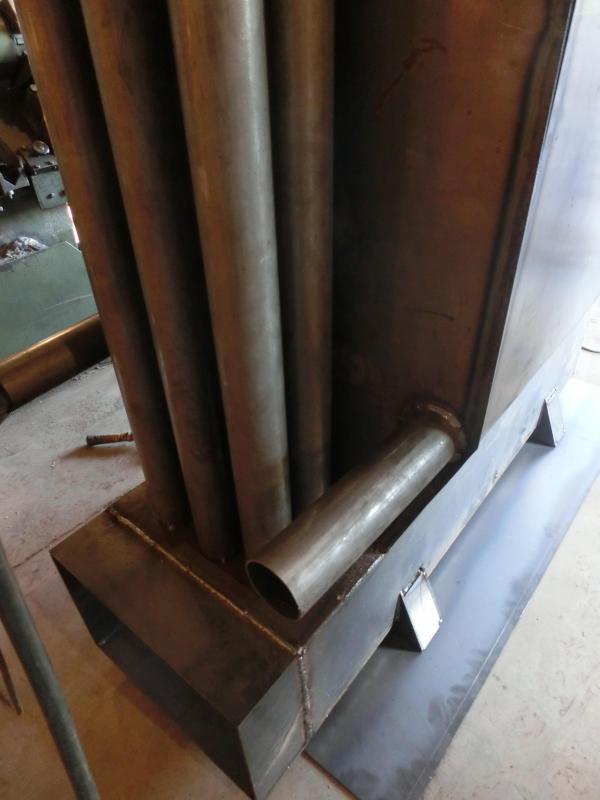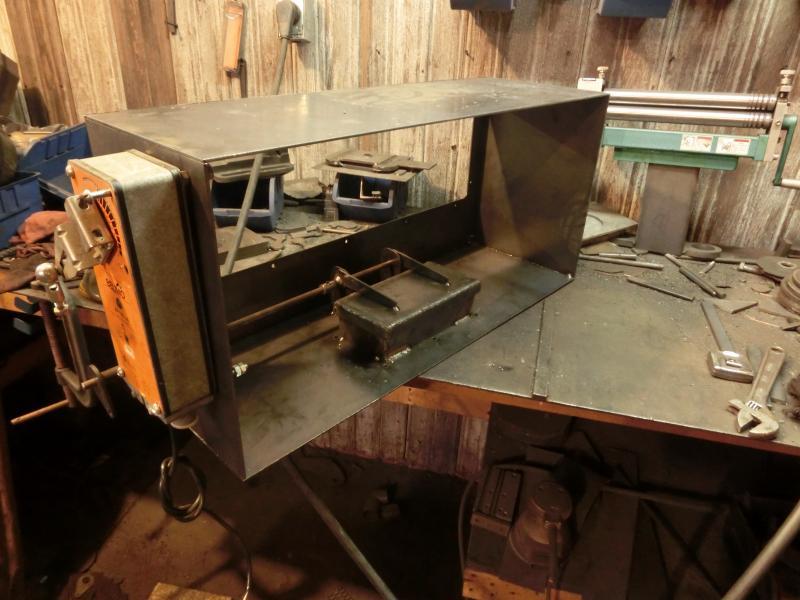I dont know what mix they used for the bottom fire block that the gas flame is blasted at,but the block glows red too aid in the combustion process,and heat recovery.
Yeah, I know what you are talking about
Got too get some wood for my water log burner tomaro for a while,later on ideas.Nap time over and out.
Joe
Have you come up with a design yet? I’m tossing around different things in my head to add supplemental heat to my house just started looking at OWB
This design burns for 1 1/2 hours to heat your house for 24 hours by inducing a power vent at the back of the exhaust during combustion. Won’t smoke out your neighbors. http://www.garn.com/
It will be a 3 pass boiler I may put an additional all copper loop inside that will be used for hot water. (showers, dishwasher, washer, pool)
I have to look more into that Garn Doug D. Interesting stuff.
Edit, Looks like it uses a large capacity water jacket.
Wow! That is a real beast!
I hope you understand you’ve put yourself in situation where there will be a lof of questions asked 
For exampel:
Log length (3’-4’?)
Storage tank (pool size?)
3 pass flow (up-left-right?)
Cleanout access?
Outlet?
More to come (I’m afraid) 
EDIT: Take a look at this boiler. This was my favorite 15 years ago when I was about to install. Price made me rethink. It seems yours will be simular.
HI joseth Hauler, Nice work ,no waisted steel or heat, It looks like high Quality fabrication. it needs a way too load on a truck, Dont forget the verticle clean out door for exaust tubes, You need a vent on any water tank jacket areas for water expansion,away from equipment,people ect. THANKS.
The picture is just the design that I am building and not the actual boiler itself. I wish I was that far along! I think the log length will be somewhere around 3ft total. The storage tank should be around 250 gallons, Those boxes on the front and back will be the cleanout doors. The gas flow will be up, left, right, out with a removable baffle between the 2nd and third pass for ease of cleaning and a start up bypass. I recently bought 41/4 sheets of stainless 4x10 for a good deal. (prices are low right now) so I may be doing mine in stainless.
Right now the logistics are the big issue. I am going to have to build a hoist in the barn. I have a few steel I-beams that I will be using for the frame with a come-a-long attached to the top. As far as moving the finished unit out to its pad outside, I will use my tractor with forks.
Here are a few picks of what it should look like. There will be a insulated shed also built around the boiler. The tubes in the firebox are for the primary burn air, and the nozzles for the secondary burn air will be found in the refractory in the secondary chamber.
I want to be your neighbor.
It looks as if the water jacket is all around the inner burn tank container? and the top door is for ash clean out of top two seperate exoust tube heating, is this correct,? THANKS for explainations
Thats right Kevin. The whole thing will be filled with water. The doors in the front from top to bottom: Top: Fire Tube brush access for the last 2 passes. Middle: Firebox loading door Bottom: Ash cleanout and window for secondary burn chamber.
I am thinking of asking mr Matt R. to make me the hinges
Allso the one i seen looked not as good as this design, except it had a flip plate door up at top back of main burn tank too bypass the heating tubes untill the fire gets good and hot from cold start,too lesson the exoust heating dirt from warm up. I think some units only use water in the back area tubes, and no water around the main burn tank,i dont know if that will help or hinder the the gasification effect, it would have too keep the gas clean and dry or the tubes would need frequent cleaning, or it could be built with water around top and back heating tubes,and not around the burn tank itself,Hope this gives another perspective trade off factor.And less leaks too have later on, as most end up with and hard too fix areas.
Leaks are the biggest concern I have. Going to double weld each seem. And Corrosion. I am the guy at my facility however that is in charge of the boiler water quality testing and know a thing or two about keeping corrosion and scale at bay. The boilers we have, have been in operation since 1995 so far without any hiccups.
here’s some specs. It should be in the 225-250k BTU range.
http://www.crownroyalstoves.com/crown-royal-outdoor-epa-phase-ii-approved
Looks good on the link above,i gess they are keeping the water on the top and back area too minus some of the condensation in the burn box for gasification. Thanks for the design photo clarification, i could build from that design,same as the one you posted above the link.sounds like they are drawing some preheated air from the unit there somewhere,probably from the hot air space on bottom around the ash clean out tube area.
The water is actually on the sides and bottom as well, it just does not depict that in the picture. The bottom would be used for the cold water return, and the top would be the hot water output (to the house) As far as preheating goes, since the secondary burn tubes are cemented into the firebrick, once the firebricks builds temp it is very stable, being that it hold heat for a long time. The air has to go though that first so it wicks off some heat. The primary air tubes are 100% removable from the back. They are roughly 1.5 inch diameter that fit through a 3 inch diameter pipe that protects them from the water. They are also adjustable to be able to aim the nozzles towards the desired area.
Here is the back of the primary air tube, that is a welded flange on the end with adjustable slots to aim the nozzle holes.
Here is a picture of the tube that the primary air tube sits in, kind of like a housing.
And here is the blower housing and actuator.
I think this design can be simplified by not using the bends on the firebox, he says he keeps the price under 5k. That is including the finished shed housing, paint, hardware.
Financing a brand new one will run around 12k shipped. That is about 220 bucks a month for 5 years!!! Building one yourself can save you about half the money if you have the logistics to pull it off.
My father once said, “God gave you the skills to do it, so use them!”
